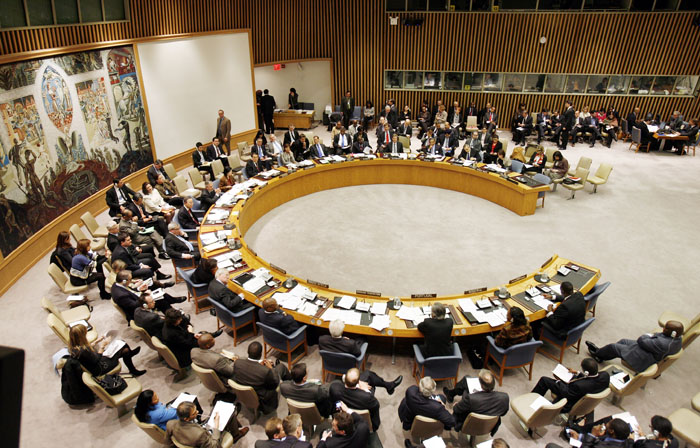
This post originally appeared on WonkRoom.
Just a few days ago, support appeared to be waning for imposing a no-fly zone over Libya. But last night, the U.N. Security Council authorized military intervention in Libya, passing a Chapter VII resolution that gives the United Nations permission to use “all necessary measures” to protect civilians.
Earlier this week, I wrote a post for the Enough Project comparing the international response to Libya and to Darfur – a topic that has stirred up strong frustration among some in the Sudan advocacy community.
Drawing comparisons across foreign policy issues has limited use, of course, because there is so much variation from one situation to the next and thus, they illicit different responses. But in recent years, as a growing consensus has formed around the idea that the international community does indeed have a “responsibility to protect,” an important question has remained: Can we actually get our acts together and effectively protect civilians?
The question is by no means answered yet. Despite the quick vocal response of the U.N. Security Council – less than a week – in the wake of Qaddafi’s deployment of fighter jets against regime opponents, the U.N.’s February resolution (including an ICC referral) and the strong condemnation by many governments has had little measurable impact on saving civilians in Libya. But yesterday’s actions are an encouraging sign that if there’s a common and genuine international will to respond, it’s possible to take collective steps to prevent further bloodshed.
In my post earlier this week, I noted that the U.N.’s hesitation to act decisively in response to the growing crisis unfolding in Darfur gave the Sudanese government time to wage their campaign against civilians.
By contrast, the urgency with which the international community reacted and began drawing up plans for how it might get involved in Libya sets an important new precedent for preventing atrocities and protecting civilians – one that should guide future responses, I argued.
The New York Times noted this significance reporting on last night’s vote:
Diplomats said the specter of former conflicts in Bosnia, Rwanda and Darfur, when a divided and sluggish Security Council was seen to have cost lives, had given a sense of moral urgency to Thursday’s debate. Yet some critics also noted that a no-fly zone authorized in the early 1990s in Bosnia had failed to prevent some of the worst massacres there, including the Srebrenica massacre.
A mentor of mine with ample foreign policy experience was also cautious about the suggestion of a trend toward a more proactive international response to civilians at risk. “The Pentagon still hates the idea, and I am still unconvinced that the international community has the will and resources to see any kind of military intervention and post conflict effort successfully through,” he wrote in an email. The fact that Libya erupted after a string of uprisings across the Middle East is also an important piece of context that made this situation unique. The international community had a bit of lead-time while watching events unfold in Egypt, Tunisian, and Bahrain.
In the last 24 hours, the U.N.’s actions appear to have had their desired effect. Faced with promised U.N. strikes against his military, Qaddafi today announced of a ceasefire. We’ll see what happens next.
Photo: U.N. Security Council (AP)

